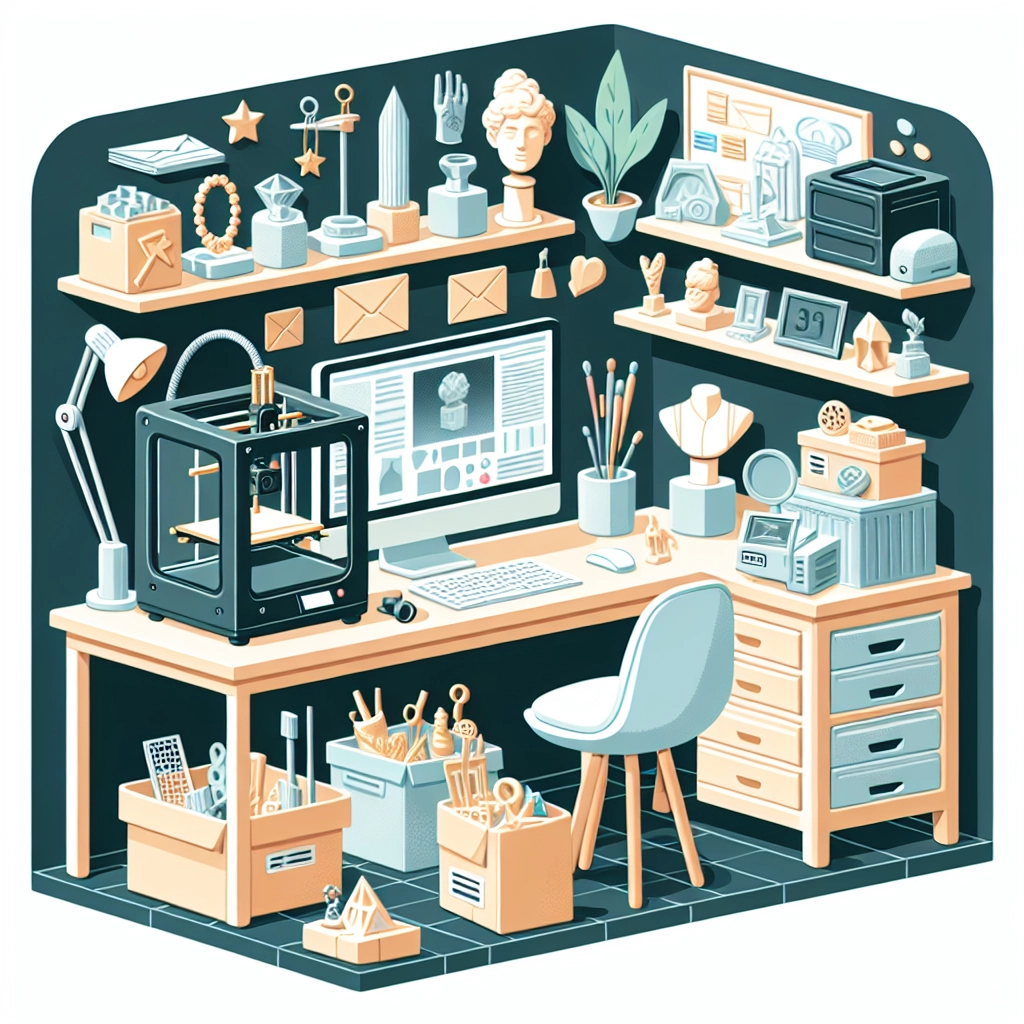How to Start a 3D Printing Business from Home
Have you ever found yourself captivated by a 3D printer, watching it work its magic, layer by layer, to create something tangible out of thin air? It’s no wonder that 3D printing has exploded in popularity in recent years—it’s innovative, versatile, and downright cool! If you’ve been toying with the idea of turning this fascinating technology into a business, you’re in for an exciting adventure. Here’s how to get started on your 3D printing business from the comfort of your own home.
Step 1: Learn the Basics
Before you dive in, it’s crucial to get a solid understanding of what 3D printing entails. Familiarize yourself with the different types of printers available, such as FDM (Fused Deposition Modeling) or SLA (Stereolithography), as well as the materials used, like PLA, ABS, and resin. Online resources, tutorials, and communities abound, so take the time to soak up as much knowledge as you can. Understanding the technology will not only help you in your business but also make you more credible to your future customers.
Step 2: Identify Your Niche
The 3D printing world is not monolithic—there are countless opportunities out there waiting for you to explore. Do you have a flair for design? Consider creating custom products like home decor, jewelry, or toys. Are you more technical? 3D printing services for prototyping can be a lucrative avenue. Research market trends, study your competition, and think about your passions. Finding a niche that excites you will keep you motivated as you embark on this journey.
Step 3: Choose the Right Equipment
Investing in the right 3D printer is crucial for your business. This decision can make or break your initial venture. New printers can range from a few hundred to several thousand dollars depending on the features you need. If you plan to produce high-quality models, a higher-priced printer or one with more capabilities may be worth the investment. Make sure to read reviews and ask for recommendations from fellow 3D printing enthusiasts before making your purchase.
Don’t forget to factor in additional equipment and materials, including slicing software, filament, and tools. Your startup costs may add up, so budgeting is essential here.
Step 4: Master Design Software
To bring your creative ideas to life, you’ll need to get comfortable with 3D design software. Programs like Blender, Tinkercad, Fusion 360, or SketchUp can help you create or edit 3D models. Many of these tools offer free versions or trial periods, so you can experiment without spending a dime upfront. There are plenty of online courses and tutorials to help you get started. The more you practice, the better you’ll become at bringing complex designs into reality.
Step 5: Build Your Brand
Once you have a solid understanding of what you want to create, it’s time to establish your brand. Think about your business name, logo, and overall aesthetic. These elements will contribute to how customers perceive you and help distinguish you from the competition. Create a user-friendly website where you can showcase your designs, highlight your story, and include an online store if you plan to sell. Social media platforms like Instagram and Pinterest are great for visually appealing content, letting you show off your work and connect with potential customers. Remember, storytelling can set you apart—share your journey and the passion behind your creations!
Step 6: Market Your Business
With everything in place, it’s time to spread the word. Make use of social media to engage with your audience and reach potential customers. Join online communities and forums where 3D printing enthusiasts gather, share your work, and offer insights. Consider local craft fairs or conventions to showcase your products in person. If your budget allows, you could even run Facebook or Instagram ads targeted at specific demographics that would be interested in your offerings. Don’t underestimate the power of word of mouth—encourage satisfied customers to share their experiences.
Step 7: Keep Learning and Adapting
The 3D printing industry is continuously evolving, so staying updated is necessary. New materials, upgraded technologies, and design trends pop up all the time. Subscribe to industry journals, attend workshops, and join 3D printing groups. Keeping your skills sharp and your knowledge fresh will not only help you deliver the best products but also keep your business relevant in a competitive market.
Starting a 3D printing business from home may sound daunting, but with passion, creativity, and a little bit of planning, it can be incredibly rewarding. You’ll not only be crafting unique products but also building a brand that showcases your talent and innovative spirit. So, dust off that printer, roll up your sleeves, and get ready to embark on an exciting venture that could turn your hobby into a thriving business!

